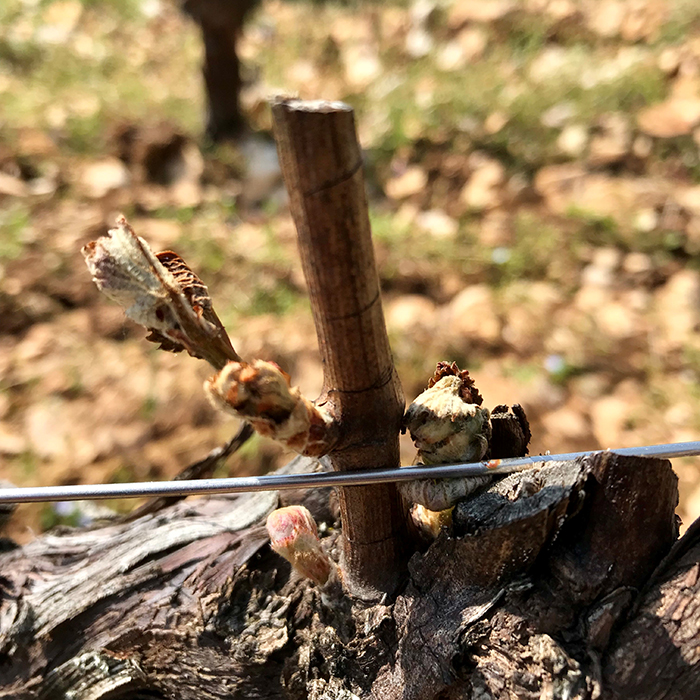Frost in Burgundy
Author: Adam Bruntlett

My Instagram feed over the past couple of weeks has been dominated by atmospheric shots of candlelit vineyards and smouldering straw bales as the vignerons of Burgundy attempt to stave off the threat of spring frost and save their fledgling 2019 crop. There have even been videos of helicopters circling Richebourg and Cros Parantoux, while in Chablis the taps have been turned on, with aspersion systems spraying water over the vines. To the casual observer these may seem like unusual and rather baffling methods to combat this particular problem, but what exactly is the aim and what’s the thinking behind it?
Why is frost a problem?
There wasn’t really a proper winter this year, and – with the warm start to the year – the vines are ahead of where they usually would be in terms of development. The warm spell we saw towards the end of February was more pronounced in France (I spent a week in the Loire, enjoying temperatures of 23°C). As a result, the vines have awoken early from their slumber and buds have burst, with leaves emerging and the vines now in a very delicate state. Chardonnay tends to be ahead of Pinot Noir, so is particularly susceptible to frost damage. Burgundy then suffered cold snaps on the 5th and 14th April, with temperatures dipping to -4°C.
What can be done?
In short, relatively little. As we saw in 2016, frost is a complex issue and it can be devastating. Any methods to combat it tend to be expensive and unreliable, but it’s very difficult as a winemaker to sit by and watch your crop be destroyed before the season has really begun.
Candles: The beautiful photos are the result of growers lighting “candles” in the rows between vines. These are not typical household candles, but rather resemble paint tins, filled with a flammable substance that burns for several hours. Depending on the expected severity of the frost, these should be placed at greater or smaller intervals. The idea is to raise the temperature by a few degrees and keep the frost at bay. Oil-fed burners are also prevalent in some areas, but are generally seen as being harmful to the environment so are going out of fashion. Some domaines had also lit candles and put sheeting over their rows of vines to keep the heat in.

Burning straw: We have seen many instances of straw bales being placed at 20-metre intervals alongside vineyards. The idea is that they are lit and regularly dampened, the aim being to create smoke rather than heat. “If there are flames, you’re doing it wrong,” one vigneron told us. When frost forms on the buds, it can have a magnifying and burning effect when subjected to sunlight. Many Burgundians got up in the early hours of Sunday morning to burn these bales and create artificial cloud cover to prevent the rising sun burning frost-covered buds.
Helicopters: Frequently used in New Zealand, where All Blacks star and helicopter pilot Richie McCaw has been known to lend a hand, helicopters are sometimes called upon to fly over the vineyards to keep the air circulating. Bernard Gros, vigneron in Vosne-Romanée, was seen circling over the vineyards of the village on Saturday night and Sunday morning, trying to protect the famous Grands Crus.
Windmills: Similarly, mobile (and static – there’s one in the garden of the Château de Puligny-Montrachet) windmills are used as well, but these cost around €40,000 each. The vignerons of Meursault have clubbed together to buy four of them, and they are placed strategically around the vineyards, the idea being to circulate the air and avoid frost pockets developing.
Water aspersion: This is particularly popular in Chablis, where many of the vineyards are fitted with this system which resembles an irrigation setup. The theory is that water is sprayed over the vines and freezes over the nascent buds, protecting and insulating them from the colder temperatures outside the ice cocoon. The timing is very important, as spraying the water at the wrong time can have catastrophic consequences, as it did for many Chablis estates in 2017, exacerbating the frost damage.


